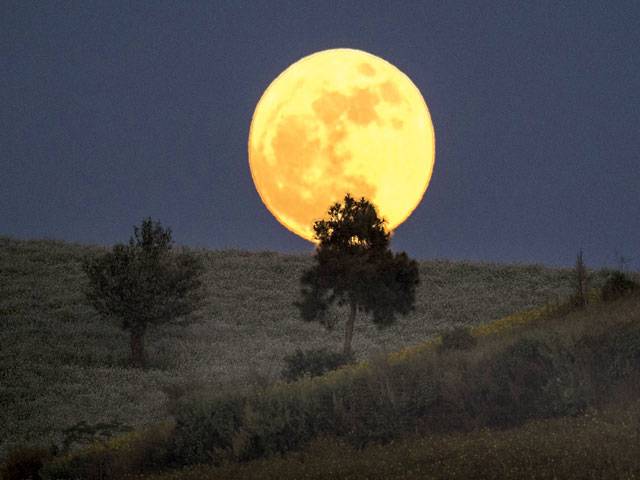LAHORE - Countries in the eastern hemisphere including Pakistan witnessed rare happening of supermoon, bigger and brighter moon yesterday, causing excitement among people to gather on rooftop to grab once in a lifetime opportunity.
The last time supermoon was seen way back in 1948 and the next incident will be on November 25, 2034 when moon will be closest to the Earth on its elliptical orbit, resulting in the largest apparent size.
People gathered on rooftops of houses for seeing supermoon as Earth’s satellite makes its closest approach since 1948. Apparently bigger and brighter Moon was big excitement for people especially youth who have never got such an opportunity in lifetime.
“Yes it is really exciting. Not just me but my entire family has not get this opportunity in the past. Hopefully, my small kids will get this opportunity when they will be grown up people after 18 years”, said Muhammad Naseer who witnessed supermoon at rooftop of his house along with his family in EME Sector of Defense Housing Authority.
Murad Aslam, a resident of Johar Town, shared the similar feelings.
“It is media that has realized people about this unique incidence. Prior information has caused us to grab this opportunity of witnessing the supermoon. It is exciting for the entire family here and my relatives in different cities”, he said.
As per the meteorological experts, the moon was seen 14 per cent bigger and 30 per cent brighter due to less distance from the earth and it would not be this close again until November 25, 2034.
“As the Moon revolves around the Earth, we see different proportions illuminated by the Sun. Once in each orbit, our satellite is totally illuminated-a full moon. As the Moon orbits the Earth every 27 days or so, it travels in an elliptical or oval shape. This means that its distance from Earth is not constant but varies across a full orbit”, said meteorological expert Shaukat Ali Awan.
Generally, supermoons can be up to 14 per cent larger and 30 per cent brighter, but only when compared with the furthest point the Moon gets to within its orbit.
‘The countries in the eastern hemisphere including Asia, Europe, Australia and Africa witnessed supermoon. Those in the western hemisphere including north and south America, parts of Pacific and Atlantic will see supermoon on Tuesday (Today).
Moon does not emit radiation and it only reflects light of Sun. As such there is no harm in watching the moon with bare eyes”, Shaukat Awan said. He said that full moon always affect oceans by developing tides and even living creatures having body fluids.
“Moon pulls earth. It cannot make any impact due to bigger mass. The pulling force causes tides in oceans. That’s why warnings are issued for precautions on coastal areas. Fishermen are also advised to stay away to avoid any mishap due to tides. It also affects humans having enough water in the body. People with less immunity especially infants and pregnant women should take extra care”, he said.






